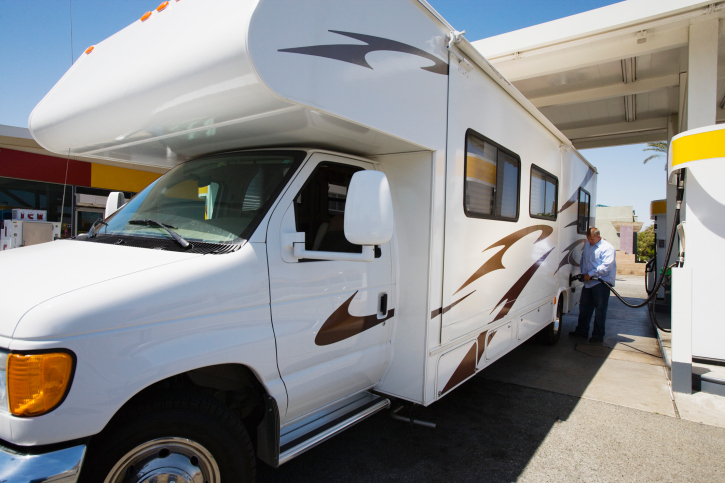Reducing your RV’s fuel consumption is not only a financial gain but also contributes to a cleaner environment. We pretty well all know the basics of increasing our RV’s fuel mileage. They include reducing travel speeds, avoiding rapid acceleration and reducing engine idling time. But, there are other ways to conserve the cost of your RV’s fuel needs. Let’s take a look at some.
When climbing grades we need to maintain the throttle in a high position or the transmission will cause an up shift. If it shifts up, the engine RPM will reduce, as probably will the climb speed. So, we must use considerable throttle to ascend a steep grade. This same grade can be climbed at a more reasonable throttle setting if we manually select a lower gear. This will not only help your fuel economy, but will also aid in keeping the engine and transmission operating cooler.
As most RV’s have the aerodynamics co-efficiency of a cement block, it is not surprising that wind resistance can be a major factor effecting fuel consumption. While on rare occasions the fuel mileage will jump when we experience a tail wind, this wind does not actually push you; it just reduces the relative wind speed against the vehicles inherent drag. Far more likely, in the real world, headwinds, will be present. A wind speed of 15 to 20 MPH can effectively reduce your fuel mileage by 20%. At that rate, your fuel bill will increase by 25%. So, what’s the solution? Ideally, delay or cancel your day’s travel plans until the wind conditions are more favorable. But, if you must travel, reduce speed greatly, perhaps routing via a slower secondary route.
The addition of a fuel mileage computer, if you do not already have one, is a great aid also. Fuel performance data delivered to the driver on an on-going basis is said to cause driving habits to change, favoring more fuel saving behavior. This is probably due to the fuel performance being monitored, just as all the other vehicle’s functions.
A fuel mileage computer will help you learn what driving behaviors improve your gas mileage, and it will also help you get better at knowing how far you can get on one tank. But in emergency fuel situations, it’s helpful to have a backup plan. Good Sam Roadside Assistance can bring you emergency fuel in the event you run out of fuel, and it also comes with unlimited towing range should the issue be more considerable.
